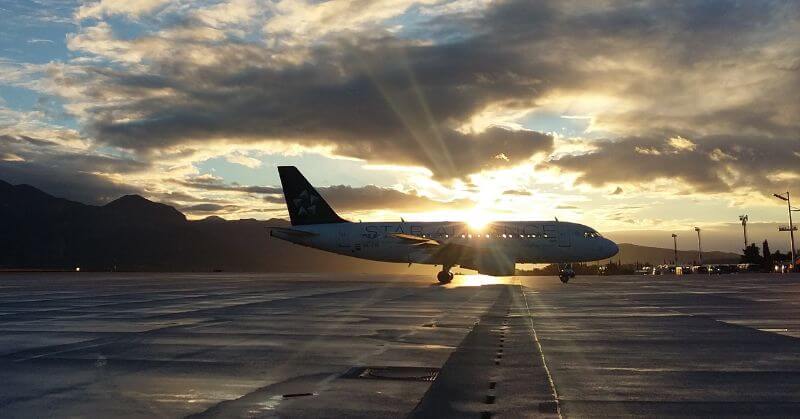Airports in India serve as an essential gateway for people, goods, and services to and from the country and around the world. While their principal job is to facilitate air travel, airports are also significant economic entities that generate significant money. Airport financial sustainability is critical for maintaining and developing infrastructure, providing efficient services, and assuring a consistent travel experience.

Airports in India use a variety of ways to generate revenue and fund their operations. Airports generate revenue from various sources, including passenger service fees, commercial activities, and cargo operations. The country has grown from 74 airports in 2014 to 147 airports by 2022, a remarkable increase.
The Two Sources Of Revenue For Airports

Airports earn revenue in two ways: aeronautical revenue and non-aeronautical revenue. These diverse sources of revenue contribute to airports’ financial sustainability and operational performance.
Aeronautical Revenue

Aeronautical revenue includes airport facility and service fees charged to airlines and aircraft operators. The following revenue streams are included in this category:
- Per-Passenger Charges: These charges are levied on each departing passenger at the airport and vary based on the route taken. Airline passengers often bear these expenses.
- Parking Fees: Parking fees are usually determined by the size of the aircraft and the length of time it uses an apron. Some airports may have a grace period during which parking is free.
- Movement Charges: Also known as “movement charges,” these levies are levied for the use of airport runways. They are computed based on the aircraft’s weight. Some airports modify these fees based on noise and emissions ratings in order to encourage airlines to use quieter and more ecologically friendly aircraft.
- Airport Development Levy: When airports embark on significant capital projects to expand their capacity, they frequently collect a development fee to help cover the expenses of these endeavors. This cost is often assessed per passenger.
- Airport Security Charges: Airport security fees are levied to pay the costs of providing security personnel and screening equipment to airlines.
Non-aeronautical Revenue

Commercial activities and services within the airport facilities provide non-aeronautical revenue. Airports diversify their revenue streams by providing various services to passengers and tourists.
Sales from retail shops, concessions, vehicle rental services, valet services, parking fees, and in-airport advertising are all included in this category. Through concession agreements, duty-free shops, bookstores, cafés, and currency exchange services contribute significantly to an airport’s earnings. Furthermore, airport lounges, which sometimes have low passenger fees, serve as a beneficial source of revenue for airports.
Non-aeronautical revenue is critical for airport operators, accounting for more than 40% of worldwide airport revenue. It contributes to the cost base of aeronautical charges, making it critical for sustaining operations and improving the entire travel experience.
According to the Airport Council International’s 2021 Airport Economics Report, retail concessions (26.4%), auto parking (20.9%), and property and real estate income (15.2%) account for over two-thirds of non-aeronautical earnings worldwide. These revenue streams demonstrate the importance of airport retail operations, parking services, and property-related activities in producing non-aeronautical revenue.
Airports Authority Of India (AAI)

The Airports Authority of India (AAI) divides its fees into two categories in the Indian context: Air Navigation Services (ANS) and Airport Services. With the formation of the Airports Economic Regulatory Authority of India (AERA), airports under the AAI’s control are further categorized as Major Airports and Non-Major Airports. Depending on the airport categorization, the duties and responsibilities for fee setting and enforcement differ:
1. Aeronautical Fees at Major Airports: The AERA is in charge of establishing and enforcing fees for aeronautical services at India’s major airports. This comprises landing and parking costs, passenger service fees, security service fees, infrastructure fees, and other aeronautical fees. AERA ensures transparency and regulates these fees to keep airlines and passengers in a fair and competitive market.
2. Aeronautical Fees at Non-Major Airports: The Ministry of Civil Aviation (MoCA) is in charge of establishing and enforcing aeronautical fees for minor airports. Landing and parking costs, passenger service fees, security service fees, and other appropriate charges are examples of these expenses. The MoCA ensures that non-major airport fees are reasonable and aligned with the operating needs and services provided.
Therefore, this diversification strategy assists airports in maintaining financial sustainability. It also helps in supporting continued operations and infrastructure development. Furthermore, it provides a more appealing and delightful passenger experience.
Follow Us: Facebook | Instagram | Twitter |
Youtube | Pinterest | Google News |
Entertales is on YouTube; click here to subscribe for the latest videos and updates.














